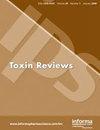交联壳聚糖-纳米粘土复合微球在高效去除水中偶氮染料中的应用
IF 2.4
4区 医学
Q2 TOXICOLOGY
引用次数: 0
摘要
摘要本研究采用壳聚糖-纳米粘土复合微珠(CS/NC复合微珠)去除水溶液中的胭脂红S。采用FTIR、SEM-EDX、TGA、BET和XRD对CS/NC复合材料进行了表征。通过改变pH、染料浓度、接触时间和温度等参数,对吸附过程进行了优化。胭脂红S在酸性区域的吸附速率较高,在pH 2.0时吸附率最高。在低染料浓度下,吸附的染料量随着温度的升高而增加,并且达到平衡所需的时间比在高染料浓度下更短。采用Langmuir、Freundlich和Temkin吸附模型的线性和非线性形式。胭脂红S的吸附行为符合线性Langmuir模型,最大吸附量为140.85 mg g-1。研究了染料浓度为150~400时吸附动力学和热力学参数的线性和非线性形式 mg/L。吸附动力学符合线性拟二阶动力学模型,CS/NC复合材料对胭脂红S的吸附是自发吸热的。结果表明,CS/NC复合材料可作为一种有效的工业废水吸附剂。本文章由计算机程序翻译,如有差异,请以英文原文为准。
Application of crosslinked chitosan-nanoclay composite beads for efficient removal of Ponceau S azo dye from aqueous medium
Abstract In this study, chitosan-nanoclay composite beads (CS/NC composite beads) were used to remove Ponceau S from aqueous solutions. CS/NC composites characterization was performed with FTIR, SEM-EDX, TGA, BET and XRD analyzes. The adsorption procedure was optimized by changing various parameters in batch experiments such as pH, dye concentration, contact time and temperature. Ponceau S adsorption took place at a higher rate in the acidic region, and the highest adsorption was observed at pH 2.0. The amount of adsorbed dye increased as the temperature increased at low dye concentrations and the time required to reach equilibrium was shorter than at higher dye concentrations. Linear and non-linear forms of Langmuir, Freundlich and Temkin adsorption models were applied. The adsorption behavior of Ponceau S is compatible with the linear Langmuir model, and the maximum adsorption capacity was found to be 140.85 mg g-1. Linear and nonlinear forms of adsorption kinetics and thermodynamic parameters were investigated for dye concentrations of 150-400 mg/L. The adsorption kinetics fit the linear pseudo-second-order kinetic model and the Ponceau S adsorption on CS/NC composites was spontaneous and endothermic. The results show that the CS/NC composites can be used as an effective adsorbent in industrial wastewater treatment.
求助全文
通过发布文献求助,成功后即可免费获取论文全文。
去求助
来源期刊

Toxin Reviews
医学-毒理学
CiteScore
6.80
自引率
0.00%
发文量
36
审稿时长
>12 weeks
期刊介绍:
Toxin Reviews provides an international forum for publishing state-of-the-art reviews and guest-edited single topic special issues covering the multidisciplinary research in the area of toxins derived from animals, plants and microorganisms. Our aim is to publish reviews that are of broad interest and importance to the toxinology as well as other life science communities. Toxin Reviews aims to encourage scientists to highlight the contribution of toxins as research tools in deciphering molecular and cellular mechanisms, and as prototypes of therapeutic agents. Reviews should emphasize the role of toxins in enhancing our fundamental understanding of life sciences, protein chemistry, structural biology, pharmacology, clinical toxinology and evolution. Prominence will be given to reviews that propose new ideas or approaches and further the knowledge of toxinology.
 求助内容:
求助内容: 应助结果提醒方式:
应助结果提醒方式:


